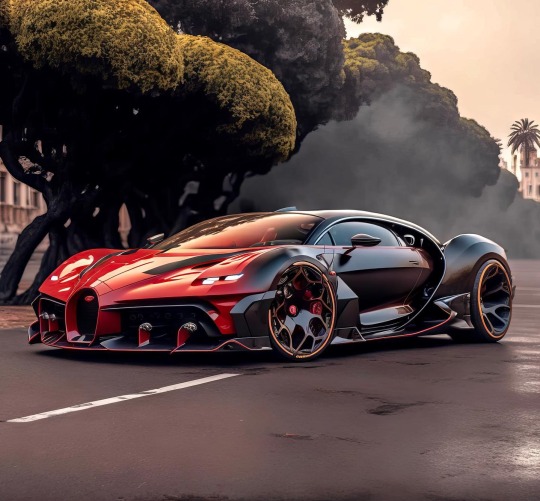#vehicle to grid
Explore tagged Tumblr posts
Text
Incorporating Renewable Energy into Your EV Charging Routine
The shift towards electric vehicles (EVs) has been a significant stride in the collective effort to reduce carbon emissions and combat climate change. As the electric vehicle market continues to grow, with global sales hitting over 6.6 million in 2021, a 108% increase from the previous year, the focus now turns to how we power these vehicles. Transitioning from fossil fuels to renewable energy sources for EV charging is the next critical step in ensuring that the benefits of EVs are fully realized. This article explores the ways in which individuals and communities can incorporate renewable energy into their EV charging routines.
Firstly, the concept of 'green charging'—the process of using renewable energy to charge electric vehicles—is not only environmentally sound but also increasingly economically viable. The cost of solar photovoltaic (PV) systems has dropped by about 90% since 2010, making it an accessible option for many. Homeowners with EVs can install solar panels to capture energy during the day, which can then be used to charge their vehicles in the evening. For those without the option to install solar panels, choosing a green energy provider for their home charging setup that sources electricity from renewables is an effective alternative.
In addition to solar power, wind energy is another potent source for EV charging. Wind energy has experienced a dramatic increase in its adoption, with the global wind power capacity reaching 837 GW in 2021, an increase of 93% from the capacity in 2016. EV owners can tap into this resource by purchasing wind energy credits or by selecting energy plans that prioritize wind-sourced electricity. This ensures that the energy used for charging their EVs comes from clean sources, even if they are not directly connected to a wind farm.
The integration of smart chargers has made it easier for EV owners to charge their vehicles when renewable energy production is at its peak. Smart chargers can be programmed to operate when renewable energy generation is high, which usually coincides with low demand periods such as mid-day for solar or night-time for wind. By doing so, EV owners ensure their vehicles are charged using the cleanest energy possible while also taking advantage of lower energy prices during these off-peak times.
Another key element in aligning EV charging with renewable energy is the development of a robust public charging infrastructure that is powered by renewables. Governments and private companies are investing in the installation of public EV charging stations that are directly connected to renewable energy sources. For instance, in California, which leads the US with over 39% of the country's EV sales, there is a plan to install 250,000 charging stations by 2025, many of which will be powered by renewables.
On a larger scale, energy storage systems play a vital role in matching renewable energy supply with EV charging demand. Energy storage solutions, like lithium-ion batteries or pumped hydro storage, can store excess renewable energy generated during peak production times. This stored energy can then be used to provide a consistent and reliable source of green electricity for EV charging, regardless of the time of day or weather conditions.
There is also a growing trend towards vehicle-to-grid (V2G) systems, where EVs do not just consume power but also have the capability to return energy to the grid. This technology allows for a dynamic energy exchange where EVs can be charged during renewable energy peak production and then supply energy back to the grid when it's needed the most. This not only ensures optimal use of renewable energy but also provides stability to the energy grid and potentially offers financial benefits to EV owners.
Finally, to truly capitalize on renewable energy for EV charging, there needs to be increased collaboration between policymakers, renewable energy providers, and the automotive industry. Incentives for residential and commercial solar installations, tax benefits for purchasing green energy, and subsidies for smart chargers are just a few of the ways that can accelerate the adoption of renewable-powered EV charging.
3 notes
·
View notes
Text
Qu'est-ce que la technologie « vehicle-to-grid » (V2G) ?

Pourquoi avons-nous besoin de cette technologie ?
Comment cela fonctionne-t-il et quelles sont les voitures dotées d'un système de recharge du véhicule au réseau ? Voici ce qu'il faut savoir : Les véhicules électriques (VE) prennent de plus en plus d'importance dans la vie de tous les jours, tout comme la technologie véhicule-réseau (V2G).
Mais si les VE représentent un progrès considérable pour l'environnement, leur demande croissante en énergie pose également de sérieux problèmes pour la stabilité du réseau électrique.
Par exemple, que se passe-t-il lorsque des milliers, voire des millions de propriétaires de VE rechargent tous leur véhicule en même temps ? Le nombre croissant de batteries de VE gourmandes en énergie entraînera-t-il une surcharge du réseau et sa fermeture ?
Les sources renouvelables telles que le solaire et l'éolien gagnent rapidement du terrain, mais elles ne sont pas en mesure de produire de l'électricité en permanence, par exemple lorsque le soleil ne brille pas ou que le vent ne souffle pas.
Cette intermittence peut entraîner des pénuries d'approvisionnement, en particulier le soir, lorsque les gens rentrent chez eux après le travail. Voir aussi «Voiture V2G : Tout ce que vous devez savoir !»
Pour maximiser les avantages des énergies renouvelables, nous avons besoin de technologies qui permettent aux batteries des véhicules électriques de les stocker lorsqu'elles sont disponibles gratuitement et de les réinjecter dans le réseau lorsque nous en avons le plus besoin.
Comment fonctionne la technologie « vehicle to grid » ?
En termes simples, la technologie « vehicle to grid » permet aux VE d'exporter la capacité inutilisée de leur batterie vers le réseau afin de combler les lacunes dans la production d'énergie renouvelable ou d'apporter un soutien lors des pics de demande.
On estime qu'il y aura environ 200 millions de véhicules électriques sur les routes d'ici à 2030, et que la plupart d'entre eux passeront la majeure partie de leur temps à l'arrêt et connectés à un chargeur.
En utilisant la technologie V2G, nous pouvons combiner ces véhicules en une « grande batterie » mobile qui charge et décharge efficacement l'électricité à différents moments de la journée, exactement quand elle est nécessaire.
Et comme la plupart des VE se rechargent pendant la nuit, la technologie V2G leur permet d'utiliser davantage d'énergie renouvelable pendant les périodes de faible demande et de préparer leurs batteries à pleine capacité pour le lendemain matin.
Grâce à un logiciel V2G intégré, les propriétaires peuvent également personnaliser la durée et le volume de leurs exportations pour les adapter au mieux à leurs habitudes de vie et de conduite.
Les avantages du V2G
Outre l'amélioration de la stabilité du réseau, les propriétaires de VE peuvent également générer des revenus à partir de l'électricité exportée, un facteur qui peut réduire de manière significative les coûts de possession sur la durée de vie du véhicule.
Pour les opérateurs de réseaux, le V2G peut également contribuer à éviter des mises à niveau coûteuses de l'infrastructure, ce qui réduit en fin de compte les coûts de l'électricité pour tous les consommateurs finaux.
Sur le plan environnemental, le V2G réduit les émissions de carbone en aidant les VE à utiliser des volumes plus importants d'énergie renouvelable. Grâce à un logiciel V2G spécialisé, les VE peuvent se recharger lorsque les sources d'énergie renouvelables sont librement disponibles et les réinjecter dans le réseau lorsque la production solaire et éolienne est faible.
Les inconvénients de la technologie V2G
Si la technologie V2G présente de nombreux avantages uniques, elle comporte également certains défis qu'il est utile de comprendre. Avec des charges et des décharges plus fréquentes, la technologie V2G peut avoir un impact sur la durée de vie de la batterie d'un véhicule électrique, bien que seuls quelques pour cent de sa capacité soient nécessaires chaque jour.
Le processus de conversion du V2G entraîne également une perte d'énergie, les rendements actuels se situant généralement entre 50 et 70 %. Pour les constructeurs automobiles, la fonctionnalité V2G nécessite du matériel spécialisé - principalement sous la forme d'un onduleur bidirectionnel - ainsi que des logiciels d'accompagnement.
Par conséquent, l'intégration de la technologie V2G est plus coûteuse pour les constructeurs, ce qui peut limiter son inclusion à des modèles et à des niveaux de finition spécifiques.
Quelles sont les différences entre V1G et V2G ?
Communément appelée « recharge intelligente », la technologie V1G est actuellement l'option la moins chère et la plus courante pour la mise en œuvre des VE. Contrairement au V2G, qui est bidirectionnel, le V1G est unidirectionnel et varie le temps et la vitesse de charge des VE afin de fournir des services de réponse à la fréquence du réseau et d'équilibrage de la charge.
Bien que le V1G ne puisse pas exporter de l'électricité vers le réseau, il permet de déplacer la charge pendant les périodes de forte demande, une fonction qui contribue à maintenir l'intégrité du réseau énergétique local.
Une énergie plus propre et plus fiable
En renforçant le réseau électrique et en maximisant l'utilisation des énergies renouvelables - sans parler de la génération de revenus pour les propriétaires de véhicules - le V2G est l'un des facteurs essentiels de l'adoption des VE au niveau mondial.
Et comme les constructeurs automobiles électrifient rapidement les véhicules particuliers et commerciaux, la technologie V2G améliorera considérablement la façon dont nous produisons, stockons et utilisons l'énergie, ce qui contribuera à nous faire progresser plus rapidement sur la voie de la conduite sans émissions.
Quelles sont les voitures qui utilisent la technologie « vehicle to grid » ?
À partir de 2021, seules quelques voitures disponibles sur le marché seront compatibles avec la technologie V2G : Nissan e-NV200 Nissan LEAF - Mitsubishi Outlander PHEV - Mitsubishi Eclipse Cross PHEV - A partir de 2022, tous les véhicules électriques de Volkswagen qui utilisent le MEB (modular electric-drive toolkit) seront compatibles V2G, comme l'a déclaré le Handelsblatt dans une interview.
Contenu connexe : Technologie de charge intelligente pour les véhicules électriques dans un environnement AUTOSAR - Webinar. Si vous souhaitez en savoir plus sur l'intégration du logiciel V2G dans les architectures des véhicules électriques, nous vous invitons à assister à notre webinaire gratuit animé par Roman Iseler, chef de produit senior d'Elektrobit pour EB tresos.
0 notes
Text





car doodles, plus plane
#alternatively: random embellishments on questionable vehicles#my art#sketch#i hate drawing the grids
59 notes
·
View notes
Text







Newlands Overlander
Concept by Jobin Sunil
#design#art#luxury cars#luxury lifestyle#concept#overlander#newlands#range rover#jobin sunil#off-road#off-grid#dicovery#monster#suv#luxury suv#vehicle
113 notes
·
View notes
Text

#survival#outdoors#yearzerosurvival.com#preppers#survival blog#preppertalk#prepper blog#prepper#shtf#prepper network#camping#yearzerosurvival#year zero survival#survival forum#survival preppers#off the grid#bugout#bugout vehicle
62 notes
·
View notes
Text
It's simple. They want everything to be electric and 'SMART'.. so they can shut everything down when compliance is not met. Cell phones, cars, stoves, meters on your house, etc. Also, when something happens to your electric vehicles, they'll put you in a "15 Minute City", so you don't need to drive anywhere... because everything is only a 15 walk from where you live. While you bathe in 5G radiation.
#smart technology#great reset#communism#electric grid#15 minute cities#5g#electric vehicles#government
12 notes
·
View notes
Text
#tech#TechnologyAI for sustainability#circular economy#electric vehicles#geothermal energy#green buildings#hydropower#Innovative technologies#Internet of Things#precision farming#renewable energy sources#smart grids#solar power#sustainable future#sustainable materials#sustainable transportation#vertical farming#wind energy
2 notes
·
View notes
Text
PSA: Utilities Charge Whatever They Want
So like, if you're paycheck to paycheck, if you're having financial difficulties, pay close fucking attention to your utility bills...
Because look at this bullshit.

Guess what happened in the 61 day billing period for 9/28/2023 statement date?
I moved into my fucking house. And started running my stove/oven and then eventually my furnace.
Guess what wasn't being used in every previous billing date shown here...?
NATURAL GAS. Like literally (in the actual definition of literally) none of it. Almost had my dad going to check if there was a leak in the lines at one point over the summer because nothing was being used. But nope, it's just the gas company charging whatever the fuck they feel like, whether you've used anything or not.
CONCLUSION: Pay attention to your bills because what they do is charge you based on an estimate of what your neighbors are using, not what you actually use. If you're having financial issues, call up your utility company and tell them that you will be calling in a reading every month (because they only send a person out to do an actual reading every other month, or now, every few months with ours, and just charge you whatever they want otherwise, and adjust it later when they do an actual reading... you can see in my bill they owed me a ton of money, because $11.17 is lower than the base charge for even having the gas turned on). And at least in NYS (or my county anyway), you have the right to demand they bill you on your actual usage by calling in a reading yourself because they don't want to pay someone to go out and do it monthly (but you can be damn sure they're going to charge you monthly).
*Also note: the double-billing 61 days on top of already being billed for 35 days of presumable the same time-period, and yet still, completely nonsensical invoice when you click on it. Their numbers come out of their ass.
#PSA#utilities should be regulated/price capped#people actually die where I live because there are no competitors and the gas and electric companies are both monopolies and charge whateve#people freeze to death & die of CO poisoning from space heaters & fires related to improper woodstove/chimney care & electric space heaters#all because they couldn't afford the energy bill#and the social programs meant to help run out during the very coldest time of the year if people even qualify for them in the first place#and the most ironic thing is that our region produces more hydro-electric power off public waterways than the grid can even handle#but a significant portion of our population can't afford their electric bill#and when all their home appliances and their vehicles are electric but one electric company has a monopoly on supply#it's going to be a fucking disaster#right now people are forced to choose which bills they can pay but when it's all one bill... they're going to be screwed#not that I'm against electric and clean energy i'm just for social equity and against giant corporations having a stranglehold on the poor
3 notes
·
View notes
Text

sorry… hate to interrupt but - if you could indulge silly ole me - could we just go back to
WHY, again, is demand expected to be higher??
what was that one more time???
2 notes
·
View notes
Text

#light cycle#motorcycle#vehicle#Tron#light trail#light#cycle#AI art#AI#futurism#art#technology#virtual game#virtual#grid#Microsoft
1 note
·
View note
Text
The global Portable Power Station Market is projected to reach USD 1.1 billion in 2028 from USD 0.5 billion in 2023 at a CAGR of 18.4% according to a new report by MarketsandMarkets™. Portable power stations are portable and compact devices that function as independent power sources. Their purpose is to store electrical energy obtained from diverse sources such as solar panels, wall outlets, or car chargers, and subsequently utilize this energy to supply power to electronic devices and appliances. These stations offer a practical and dependable solution for powering various devices during outdoor activities, camping excursions, road trips, and emergency scenarios. By eliminating the need to depend on conventional power grids or generators, portable power stations ensure that users have access to electricity wherever they are. Their compact design, user-friendly nature, and capacity to deliver clean and sustainable power have significantly increased their appeal among individuals seeking reliable and adaptable energy sources.
#portable power station#portable solar generator#portable solar charger#portable generator#portable power#portable power solar#portable power bank#portable power station market#sustainable energy#energy#energia#power generation#utilities#power#utility#renewable power#renewableenergy#electricity#renewable resources#power supply#off grid#off grid power#emergency power#solar panels#solar energy#solar power#portable ev charger#automotive#electric vehicles#electric cars
0 notes
Photo







Bugatti Custom Vehicles
Styling by Flybyartist
#art#design#concept#carconcept#conceptcar#truck#off-road#off-grid#bugatti type 35B#customization#vehicle#flybyartist#luxurycars#luxurycar#luxury truck#luxurylifestyle#cgiart#render
443 notes
·
View notes
Text



#outdoors#survival#yearzerosurvival.com#survival blog#preppertalk#preppers#prepper#prepper blog#shtf#prepper network#yearzerosurvival#year zero survival#survival forum#survival preppers#off the grid#bugout#camping#hiking#bugout vehicle#bug out#emp#blackout
9 notes
·
View notes
Text



#tesla#cybertruck#off roading#camping#truck camping#off grid#road trip#adventures#truck life#electric cars#electric trucks#full self driving#autonomous driving#autonomous vehicles
0 notes
Text
youtube
Manufacturer kill switches on EV and Gas vehicles
Battery Management Systems on EV
Right to Fix or Repair
Electric grid capacity discussion
#ev cars#gas cars#vehicle kill switches#batteries#right to fix or repair#electric grid#car talk#debt talk#ev car range#Youtube
0 notes